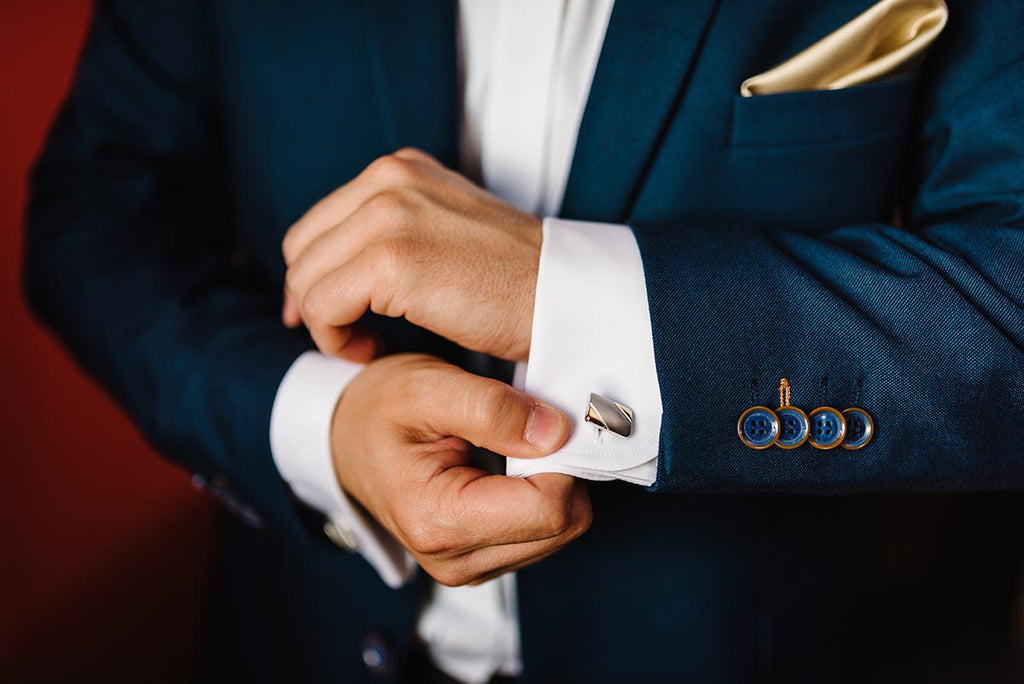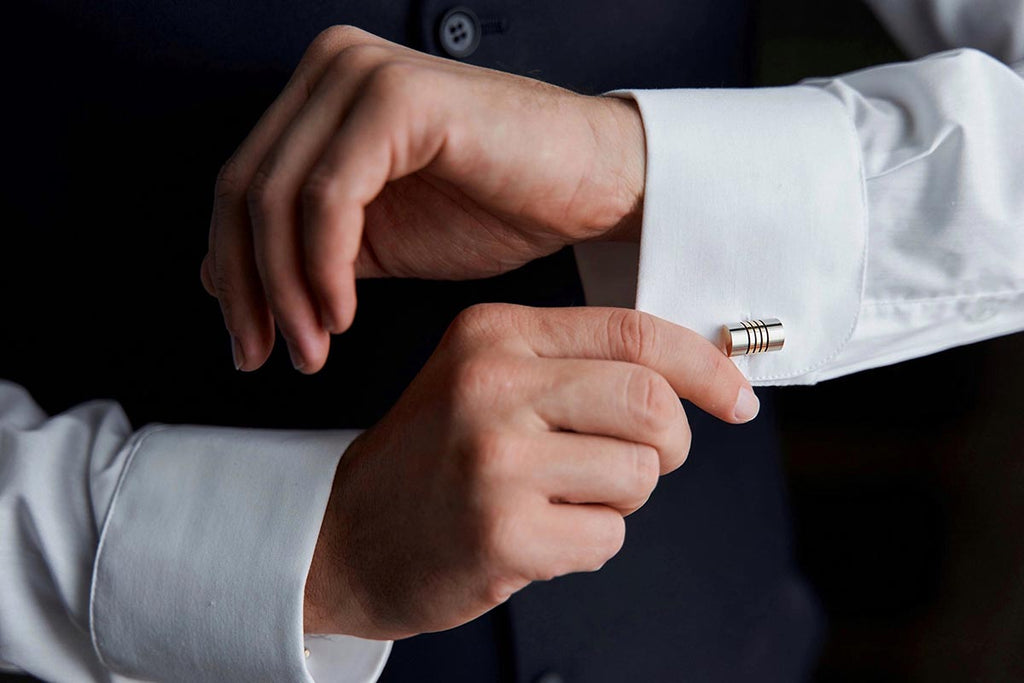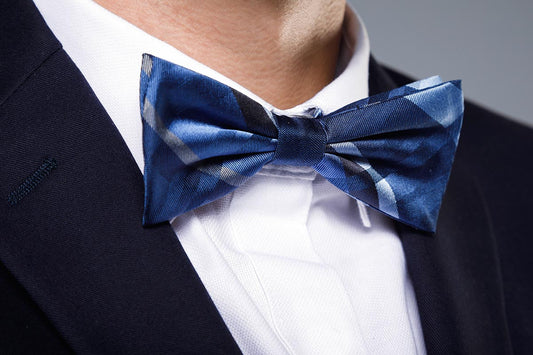Cufflinks offer a touch of elegance and personal style to a man's wardrobe, serving as both functional pieces and fashion statements. They are a classic accessory typically worn with dress shirts that have French or double cuffs, which lack buttons and instead have holes on both sides of the cuff opening. To wear cufflinks, one must align these holes and insert the cufflink, securing it so that the decorative part is visible on the outside of the wrist. Cufflinks come in various designs, materials, and closures, providing a myriad of options to complement different styles and occasions.
Understanding how to select and wear cufflinks is essential to pulling off a polished look. The choice of cufflinks should not only adhere to the dress code but also reflect the wearer's personal style. While traditionally associated with formal wear, modern fashion allows for cufflinks to be incorporated into more casual ensembles, broadening their appeal. Suitable shirts for cufflinks include those with French cuffs and convertible cuffs, the latter offering the versatility to be worn with buttons or cufflinks as the situation demands.
When dressing for professional or formal settings, men should opt for cufflinks that are subtle and complement the tones of their suit and tie. There are many types of cufflinks including: anchor cufflinks, infinity cufflinks and silver knot cufflinks. For festive or relaxed occasions, they might consider more vibrant or novelty designs that add a playful touch to their outfit. The key is to ensure that cufflinks are harmonious with the overall ensemble and appropriate for the level of formality of the event. Whether for a business meeting or a wedding, cufflinks are a refined finishing touch that can elevate a man's style quotient.
Understanding Cufflinks
Cufflinks are a traditional accessory used to fasten the cuffs of dress shirts. Originating in the 17th century, they have evolved into a fashion statement that adds a touch of elegance to a gentleman's attire.
There are various types of cufflink designs, including:
- Whale back cufflinks: These have a flat head, a straight post, and a "whale tail" that flips flat against the post. They are easy to use and secure, making them a popular choice.
- Bullet back cufflinks: Similar to whale back, they have a cylindrical post that flips inward to close.
- Toggle closure cufflinks: Featuring a straight post with a toggle bar at the end, the bar swivels into a horizontal position to lock.
Other designs include:
- Chain link cufflinks: Two heads connected by a short chain, offering a more traditional look.
- Ball return cufflinks: Characterised by a curved post with a small ball opposite the decorative face.
- Knot cufflinks: Typically made from silk or rope, fashioned into a knot on either end.
- Locking dual-action cufflinks: They have a hinge mechanism for extra security.
- Stud cufflinks: They have a decorative front and a smaller, fixed rear piece.
Cufflinks are made from a variety of materials, each lending its unique appeal:
| Material | Features |
|---|---|
| Gold | Classic and opulent |
| Silver & Sterling Silver | Versatile and widely favoured |
| Rose Gold | Trendy with a warm hue |
| Onyx | Sleek and modern |
| Crystal & Glass | Adds sparkle and is eye-catching |
| Gunmetal | Contemporary and subtle in shine |
| Carbon Fiber | Modern with an industrial edge |
| Mother of Pearl | Classic with an iridescent finish |
| Precious Stones | Exclusivity and luxury |
The choice of material often affects the occasion the cufflinks are suitable for, with gold and precious stones typically reserved for more formal events, and materials like carbon fiber more suited for casual sophistication. When selecting cufflinks, one should consider both the occasion and the shirt with which they will be worn.
Choosing the Right Cufflinks
Selecting the ideal cufflinks involves considering the occasion, the type of shirt, and the coordination with other jewellery. Precision in choice enhances one's attire significantly.
By Occasion
Formal Events: For black tie events or weddings, opt for sophisticated cufflinks such as tuxedo cufflinks. They should be understated yet elegant, commonly made from silver, gold, or mother-of-pearl.
- Weddings: Choose cufflinks that complement the wedding's colour scheme or theme.
- Business Attire: For the office or business meetings, select more conservative designs, keeping in line with the company's dress code.
By Shirt Type
French Cuff Shirts: These are tailored to be worn with cufflinks. The double cuff folds back and the cufflink secures it.
- Dress Shirts: Not all dress shirts are suitable for cufflinks. Look for shirts with buttonholes on both sides of the cuff but no buttons.
| Shirt Type | Cufflink Compatibility |
|---|---|
| French Cuff | Yes |
| Barrel Cuff | No |
| Double Cuff | Yes |
Shirts to Wear with Cufflinks: Ensure your wardrobe has a selection of French cuff shirts or shirts designed for stud cufflinks for a versatile formal wear collection.
Matching Jewellery
Coordinate cufflinks with other items of jewellery, such as a tie clip or wristwatch, for a cohesive look.
- Materials & Colours: Match metals across all jewellery and opt for complementary colours.
- Style & Personality: Reflect your personality with novelty cufflinks for less formal occasions or stick to classic materials like gold or silver for a more conservative appearance.

How to Attach Cufflinks
When preparing to attach cufflinks to a dress shirt, one must ensure they work with the correct type of shirt – typically one with French or double cuffs – and understand the fastening mechanism specific to the cufflinks chosen.
Working with French Cuffs
A dress shirt with French cuffs, also known as double cuffs, provides the necessary foundation for cufflinks. These specific cuffs are longer and fold back onto themselves, creating a double layer of fabric with aligned holes for the cufflinks. The wearer must fold back the cuffs so that the holes on both sides of the cuff are perfectly aligned.
Securing Different Types of Cufflinks
Whale Back Cufflinks: These are perhaps the most common type, featuring a flat head, a straight post, and a "whale tail" that flips flat against the post. To secure these, one must simply insert the post through the cuff's holes and flip the whale tail to ensure it is parallel with the post, locking the cufflink in place.
Bullet Back and Toggle Closure Cufflinks: Similar to whale back cufflinks but featuring a narrow cylinder that is set between two short posts. One aligns the cylinder with the post and cuff holes, then locks it in place by flipping the cylinder into a horizontal position.
Chain Link Cufflinks: These have two decorative faces connected by a chain. The wearer threads one face through the holes of the shirt cuff, allowing the chain to hang loose and then repeats the process on the opposite side.
Knot Cufflinks: Made from silk or rope, knot cufflinks offer a less formal look. They are secured similarly to chain link versions, with the knot on the outside of the cuff.
Ball Return Cufflinks: This type involves a rigid fixture that is easier to fasten due to its structure, with a spherical head and curved post that are manipulated to secure through the holes.
Locking Dual-Action Cufflinks: These feature a hinge system that opens and locks. The wearer opens the cufflink, slides the post through both layers of the cuff, and locks it in place.
By understanding the appropriate method for each type, one can securely fasten cufflinks, providing both form and function to their ensemble.
Coordinating Cufflinks with Attire
Cufflinks are a sophisticated accessory that can enhance one's appearance at various events. They add a touch of elegance when paired correctly with a dress shirt and suit, reflecting one's personal style and attention to detail.
Selecting Cufflinks for Formal Events
For formal occasions, such as weddings or black-tie galas, selecting cufflinks should be done with utmost consideration. They should match the formality of the event. For tuxedos, opt for silver, gold, or mother-of-pearl cufflinks. These classic materials elevate the outfit, providing a refined finishing touch. A rule of thumb is that cufflinks should complement other jewellery, such as watches or tie pins, to maintain a coherent style.
Incorporating Cufflinks into Business Attire
When it comes to business attire, cufflinks serve both a functional and a stylistic purpose. They should abide by the company's dress code while allowing a gentleman to express his personality. For everyday office wear, one might choose cufflinks with subdued tones or minimalistic designs that suggest professionalism without overshadowing the ensemble. Subtle patterns or modest coloured enamel can add interest without compromising the simplicity necessary for business settings.
Cufflinks as a Fashion Statement
Cufflinks are not reserved solely for formal wear—they can also be a definitive fashion statement that reflects one's personal flair. When dressing more casually or for less conventional events, an individual can experiment with shapes, colours, and unique materials. Novelty cufflinks or those reflecting personal interests can be a conversation starter and a means to project an aspect of one's personality through their fashion choices. However, it remains essential to ensure that the cufflinks do not clash with the shirt or suit, but rather complement them.
Accessorising with Cufflinks
When it comes to cufflinks, they serve not only as functional items but also as significant fashion statements. Understanding how to expertly pair these accessories can elevate a man's formal attire.
Pairing with Other Accessories
Cufflinks should be chosen in harmony with other accessories. Combining them with a tie clip or other jewellery should be done thoughtfully. For instance, if one is wearing a gold tie clip, then gold cufflinks are an appropriate match. The key here is consistency in materials and style. For those wearing a blazer, complementing the cufflinks with blazer buttons can offer a cohesive look.
| Accessory | Cufflink Material | Coordination |
|---|---|---|
| Tie Clip | Gold | Gold Cufflinks |
| Watch | Stainless Steel | Silver or Gunmetal Links |
| Blazer | Brass Buttons | Gold or Brass Links |
Playing with Colours and Materials
Cufflinks come in a variety of materials and colours, ranging from sterling silver to crystal and gunmetal. They should complement the shirt and suit without overpowering them. For instance, a blue shirt can be paired with silver or mother-of-pearl cufflinks for a classic look. The materials used can include precious metals like gold, silver, and rose gold, or even more modern materials like carbon fibre.
- Traditional Colours: Gold, Silver, Gunmetal
- Modern Choices: Carbon Fibre, Crystal
- Specific Shirt Match: Blue Shirt with Silver Cufflinks
Expressing Individuality
Cufflinks offer an opportunity to express one’s personality and a sense of individual style. While tradition might dictate a more conservative approach, there is room for personalised expression through novelty designs or non-traditional materials like glass or onyx. It's important to remember that cufflinks are the finishing touch to a man's outfit, and they can reflect individual interests or aspects of one's personality.
- Conservative: Onyx, Mother-of-Pearl
- Expressive: Novelty Designs, Diamonds
- Personality Showcase: Reflect hobbies or profession through cufflink design




















